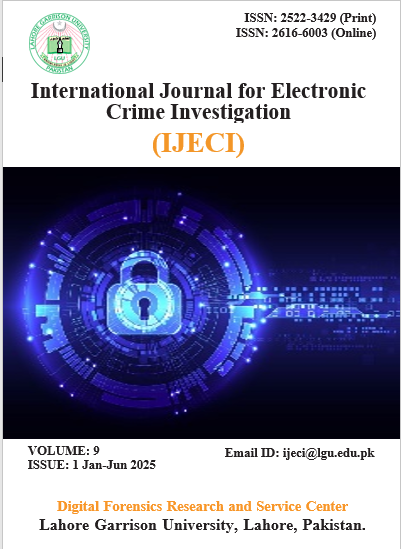3D Topological Modeling in Forensic Science: Integrating GIS for Digital Evidence Visualization and Analysis
Abstract
The present paper introduces a unified system of digital crime scene reconstruction, which incorporates 3D topological modeling, Geographic Information Systems (GIS) and the artificial intelligence (AI). Utilizing LiDAR point data and photogrammetry captured by drones, spatial-accurate 3D models are generated reflecting the scene of a crime in the highest resolution. YOLOv8 and Faster R-CNN are AI models, which are trained to automatically recognize critical forensic items, such as weapons, bloodstains, footprints, and bodies, which are fed using synthetic data. Such items are captured with geo-reference in a GIS setting, allowing an investigator to do spatial analyses, line-of-sight, movement simulation and evidence clustering, with layered environmental data. The system is tested on the synthetically created scenes using Blender and tested using the performance indicator such as precision, recall, and AUC. Results portray impressive classification ability, especially on the objects of weapon and bodies. The structure suggested does not only increase the precision and objectivity of criminal investigations, but it also facilitates visualization of the results that can be used in court and can support a collaborative approach in terms of interdisciplinary research. It is a breakthrough in space-wise smart digital forensics.

